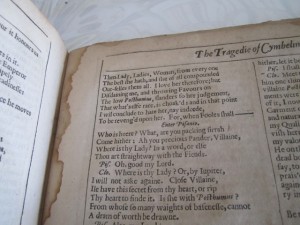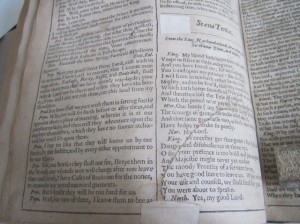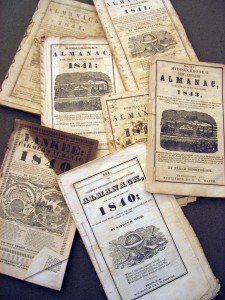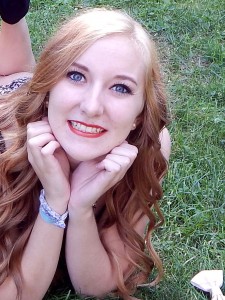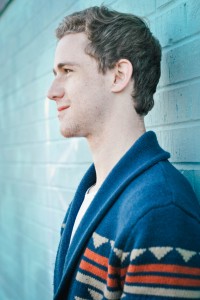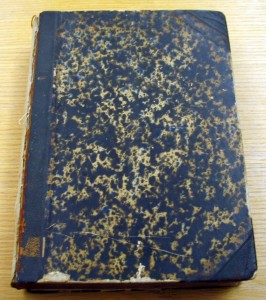 As many of our readers know we acquired a “2nd Folio” of Shakespeare in 2012–the second edition (1632) of the first complete collection of the Bard’s plays ever printed (the first was in 1623). This copy resided in the possession of one family for generations–back to the mid-19th century, in fact–and although they took care of it, nothing in the way of conservation has been done to the book in over 150 years.
As many of our readers know we acquired a “2nd Folio” of Shakespeare in 2012–the second edition (1632) of the first complete collection of the Bard’s plays ever printed (the first was in 1623). This copy resided in the possession of one family for generations–back to the mid-19th century, in fact–and although they took care of it, nothing in the way of conservation has been done to the book in over 150 years.
The 19thC binding is falling apart, the sewing is coming undone, there are water stains, inactive mold, paint and ink marks, food remains, and just a general level of grime present all through the book. Every page must be cleaned with brushes and dry-cleaning erasers, tears in the pages mended with Japanese paper, older (and clumsier) repairs must be fixed or undone and re-done, and fragile edges reinforced so that the binder can put it all back together (including facsimiles of the seven missing leaves).
We have selected Marie Oedel as our conservator–who serves in that capacity to the Boston Museum of Fine Arts Library (please see her website for her many credentials). Our binder is Sam Ellenport, a master of his craft who ran the Harcourt Bindery in Boston for 40 years.
Our goal is to raise $5,000 for this project–please e-mail richard.ring@trincoll.edu if you would like to help!
Here are some pics of water damage, mold, and tears present in the book:


